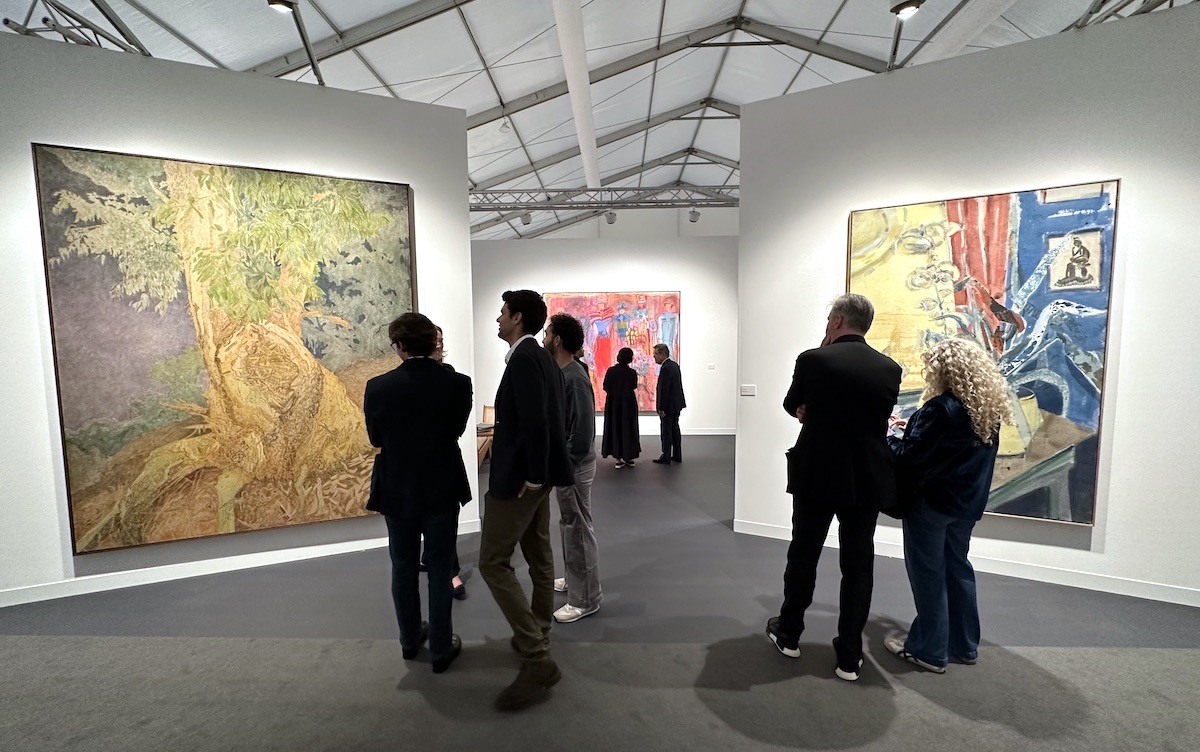Puteri 3 (Ulek Mayang Series)
2018 - Sculpture (Sculpture)
94 x 55 x 24 cm
Anne Samat
Anne Samat’s Puteri 3 references Ulek Mayang, a classical Malay dance, performed in a ritualistic pre-Islamic context. It is based on the myth of a princess from the sea who steals the soul of a fisherman she falls in love with, leaving his body lifeless. A battle ensues for the soul of the fisherman, between a shaman (bomoh) trying to bring back the spirit into the earthly flesh and the princess aided by five of her sisters. The undecided struggle only ends when the more senior seventh sister intervenes and restores the cosmic balance and order of things disturbed by love. She thus separates the sea worlds from the earthly ones, allowing the spirit of the fisherman to leave the depths of the ocean and the thralls of love and to return to his mortal body. As a sign of gratitude towards the elder princess, the fisherman’s community offers coloured rice to the sea in an elaborate ceremony of which Ulek Mayang was a part of. This practice-turned-tradition continued until very recently when it was threatened by the rising Islamization movement that has opposed many other cultural forms arising from a syncretic Malay tradition.
An exuberant and precise sculptor, Anne Samat blends the aesthetic of international queer cultures – which she proudly represents as a transgender activist – with various textile and bricolage influences from South East Asia and beyond. She queers tradition with originality and confidence, creating figures that defy any fixed categories, be it of species, gender, or human versus sacred or fantastical figures. She navigates regimes of referentiality with grace and employs resources that range from drag queen ingeniousness to ancient Malay songket pageantry. Using intricately-woven textile, synthetic fibres, rattan sticks and other found objects, she creates colourful and elaborate totems inspired by ancient tales of her ancestry, evoking her familial lineage and the different cultures in Malaysia. She puts together found objects and elements with great intricacy, from indigenous natural materials to cheap industrial artefacts, creating striking totemic appearances that transcend time and geographies, but which nevertheless act as both metaphors for composite, intersectional, and empowered personal identities, as well as for the hybridity of Malaysian culture and its many influences and constitutive communities. In the face of increasing religious conservatism in the artist’s native country, her works with their figuration, unabashed vanity, and references certainly gain an extravagantly subversive quality.
Colors:
Related works sharing similar palette

© » KADIST
Shahryar Nashat
2014In the film Hustle in Hand (2014) we observe secret negotiations carried out between two characters with only their torsos visible in the frame— negotiations that consider fetishizations, meaning and symbolic value of the body and flesh...

© » ARTS EQUATOR
Podcast Interview: Performance Photographers | Arts Equator Thinking and Talking about Arts and Culture in Southeast Asia Festival (Podcast) Crispian Chan (by Izdiyad Ahmad), Bernie Ng (by Biru Chua), Kuang Jingkai April 24, 2019 Duration: 45 min In this interview with Crispian Chan , Bernie Ng and Kuang Jingkai , three photographers of theatre and dance, we get to know more about a profession that’s sometimes taken for granted but is an essential aspect of the packaging of a performance...

© » KADIST
Asier Mendizabal
2012Rotation presents the image of a crowd, a re-appropriation of 19th or beginning of 20th century photographs published in newspapers and magazines...

© » KADIST
A Remote Viewing workshop with artists Myriam Lefkowitz and Simon Ripoll-Hurier 11:00am to 1:30pm or 2:30pm to 5:00pm In the heart of Silicon Valley in the 1970s, and under the aegis of the CIA, a group of scientists and psychics developed a technique intended to channel extra-sensory perceptions in an effort to produce descriptions of distant targets...

© » KADIST
Helina Metaferia
2023By Way of Revolution is a series that addresses the inherited histories of protest that inform contemporary social movements...

© » KADIST
Pedro Reyes
2005In Reyes’s words, “We should be able to extract the technological nutrients before we excrete our waste...

© » KADIST
Noé Martínez
2019As he investigates the forms that slavery took through different events that occurred during the sixteenth century in the Huasteca region of Mexico, Noé Martínez tells, in a non-linear narrative, the history of human trafficking in Relación de tráfico de personas 1525-1533 I (Study of Trafficking of Persons 1525–1533 I) ...

© » KADIST
Dale Harding
2018Dale Harding’s installation Body of Objects consists of eleven sculptural works that the artist based on imagery found at sandstone sites across Carnarvon Gorge in Central Queensland...

© » ARTFORUM
Expo Chicago Announces Participants for 2024 Edition – Artforum Read Next: RUTH FOUNDATION FOR THE ARTS NAMES WINNERS OF INAUGURAL $100,000 RUTH AWARDS Subscribe Search Icon Search Icon Search for: Search Icon Search for: Follow Us facebook twitter instagram youtube Alerts & Newsletters Email address to subscribe to newsletter...

© » KADIST
Reyes Santiago Rojas
2015The work Sarta (String) by Reyes Santiago Roja is part of a larger series of works that examine the commercialization of the tobacco plant and its relationship to the meaning and use of tobacco by Native American tribes such as the Mayas, Aztecs, Incas or Tainos, which attributed spiritual qualities to tobacco such as the smoke carrying one’s thoughts and prayers to the sprits...

© » KADIST
Laetitia Sonami
2006Although at first the work Sounds of War presents itself with a degree of playfulness and humour, a close inspection reveals its painful undertone...









